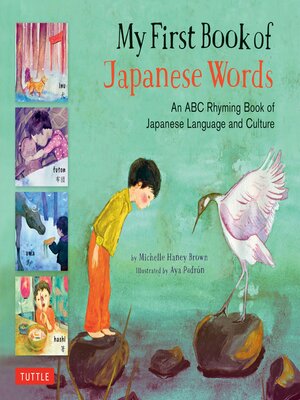My First Book of Japanese Words
ebook ∣ An ABC Rhyming Book · My First Words
By Michelle Haney Brown

Sign up to save your library
With an OverDrive account, you can save your favorite libraries for at-a-glance information about availability. Find out more about OverDrive accounts.
Find this title in Libby, the library reading app by OverDrive.



Search for a digital library with this title
Title found at these libraries:
| Library Name | Distance |
|---|---|
| Loading... |
My First Book of Japanese Words is a beautifully illustrated book that introduces young children to Japanese language and culture through everyday words.
The words profiled in this book are all commonly used in the Japanese language and are both informative and fun for English-speaking children to learn. The goals of My First Book of Japanese Words are multiple: to familiarize children with the sounds and structure of Japanese speech, to introduce core elements of Japanese culture, to illustrate the ways in which languages differ in their treatment of everyday sounds and to show how, through cultural importation, a single word can be shared between languages.
Both teachers and parents will welcome the book's cultural and linguistic notes and appreciate how the book is organized in a familiar ABC structure. Each word is presented in Kanji (when applicable), Kana, and Romanized form (Romaji).
With the help of this book, we hope more children (and adults) will soon be a part of the 125 million people worldwide that speak Japanese!
The words profiled in this book are all commonly used in the Japanese language and are both informative and fun for English-speaking children to learn. The goals of My First Book of Japanese Words are multiple: to familiarize children with the sounds and structure of Japanese speech, to introduce core elements of Japanese culture, to illustrate the ways in which languages differ in their treatment of everyday sounds and to show how, through cultural importation, a single word can be shared between languages.
Both teachers and parents will welcome the book's cultural and linguistic notes and appreciate how the book is organized in a familiar ABC structure. Each word is presented in Kanji (when applicable), Kana, and Romanized form (Romaji).
With the help of this book, we hope more children (and adults) will soon be a part of the 125 million people worldwide that speak Japanese!







